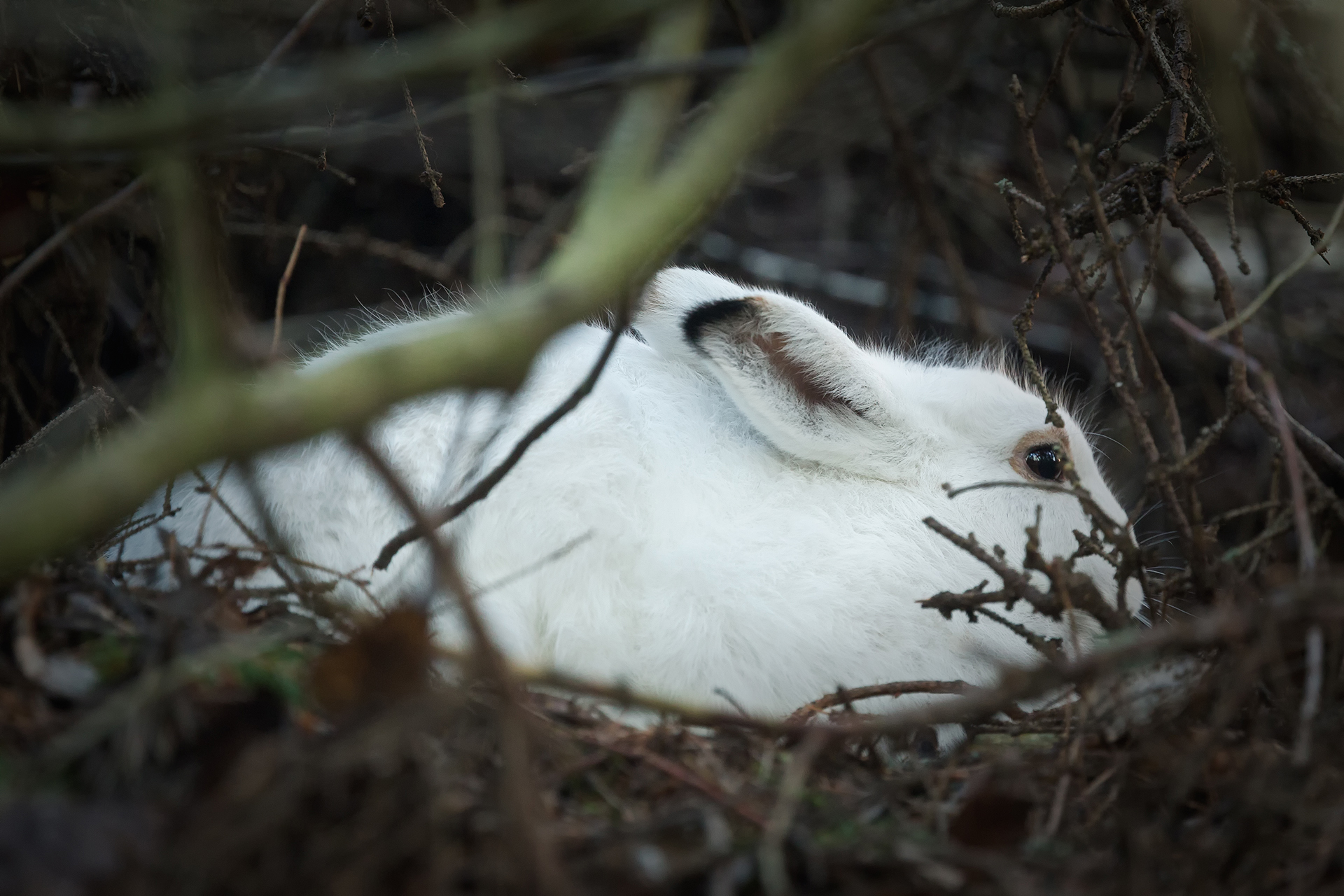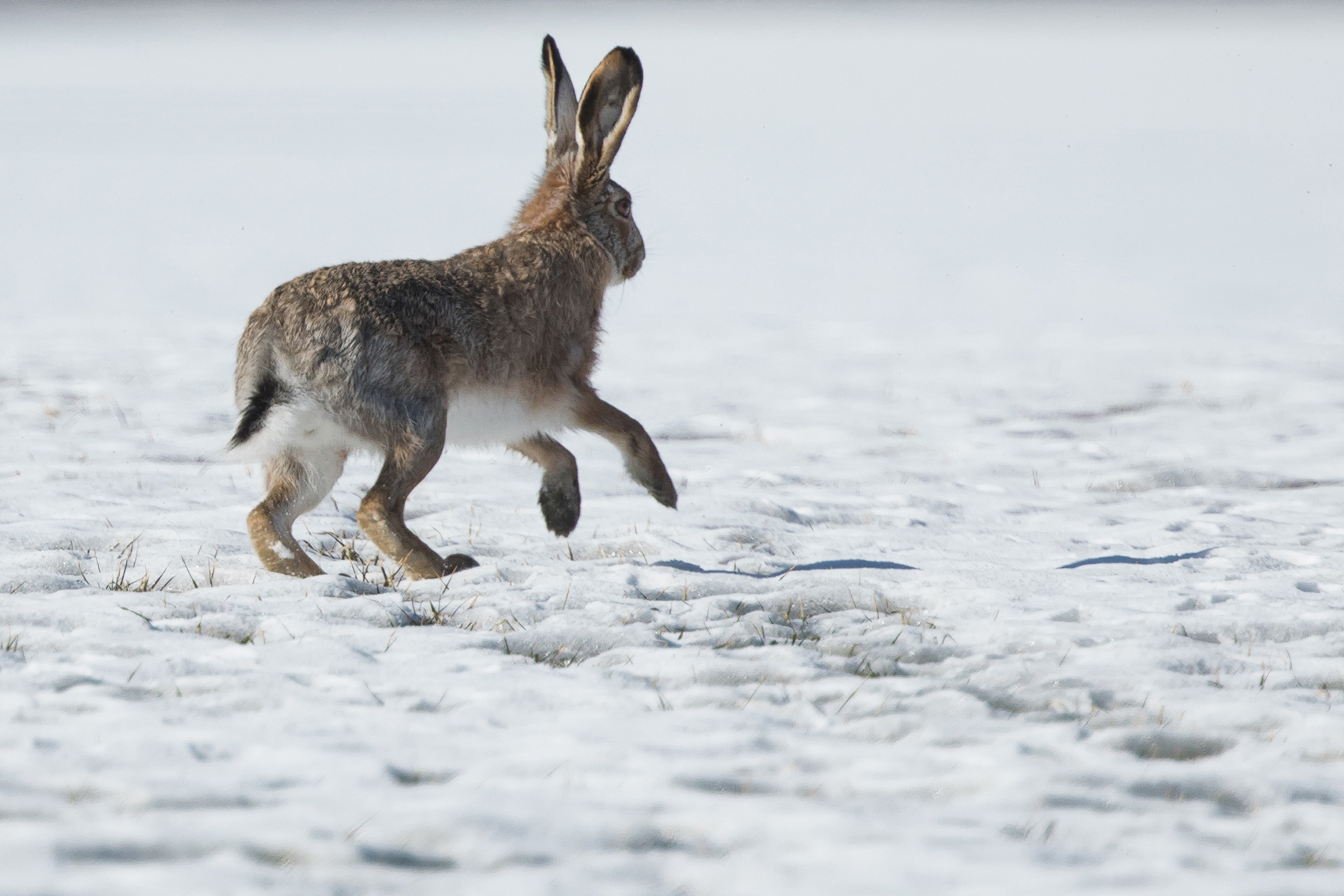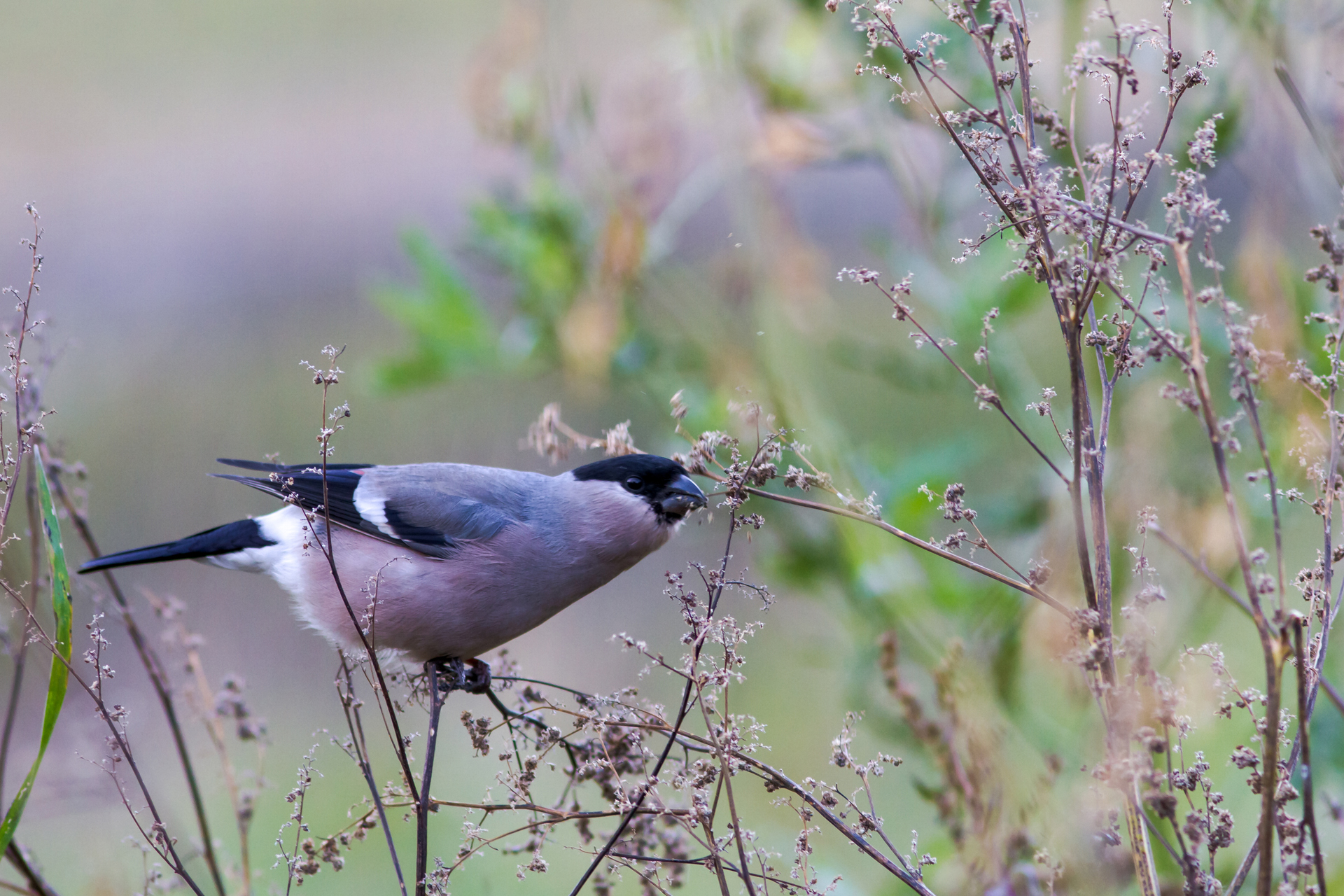The blue hare is better adapted to winter than the brown hare
There are two species of lagomorphs bouncing on the snows of Ruissalo. The western part of the island is home to a small population of blue hares, a species native to the area and well-adapted to winter. It dons a white coat for winter, which protects the blue hare from both predators and the cold. In addition to this, the blue hare is able to spread the toes of its hind legs wide, turning them into effective, natural “snow shoes” that keep it highly mobile even in soft snow.
The blue hare gained a competitor in the early 20th century when the brown hare spread to Finland from the southeast. The brown hare’s invasion of Finland was also aided by its intentional release into the wild in southwest Finland. However, the brown hare is not as well adapted to snowy winters as our native blue hare. Its brownish winter coat is not as effective as the blue hare’s white one, in addition to which the brown hare sinks deeper into the snow.
The blue hare thrives in forests, while the brown hare primarily prefers fields, open areas and the edges of forests. Even so, there is a risk that the brown hare, being larger and stronger, will eventually supplant its cousin the blue hare. This development is accelerated by climate change, as conditions in winter no longer correspond to the ones that the blue hare has adapted to with its coat changing. As a result, every autumn and spring you can see more and more white hares bounding away from their pursuers across the snowless terrain. The brown hare, on the other hand, fares much better in snowless conditions.



